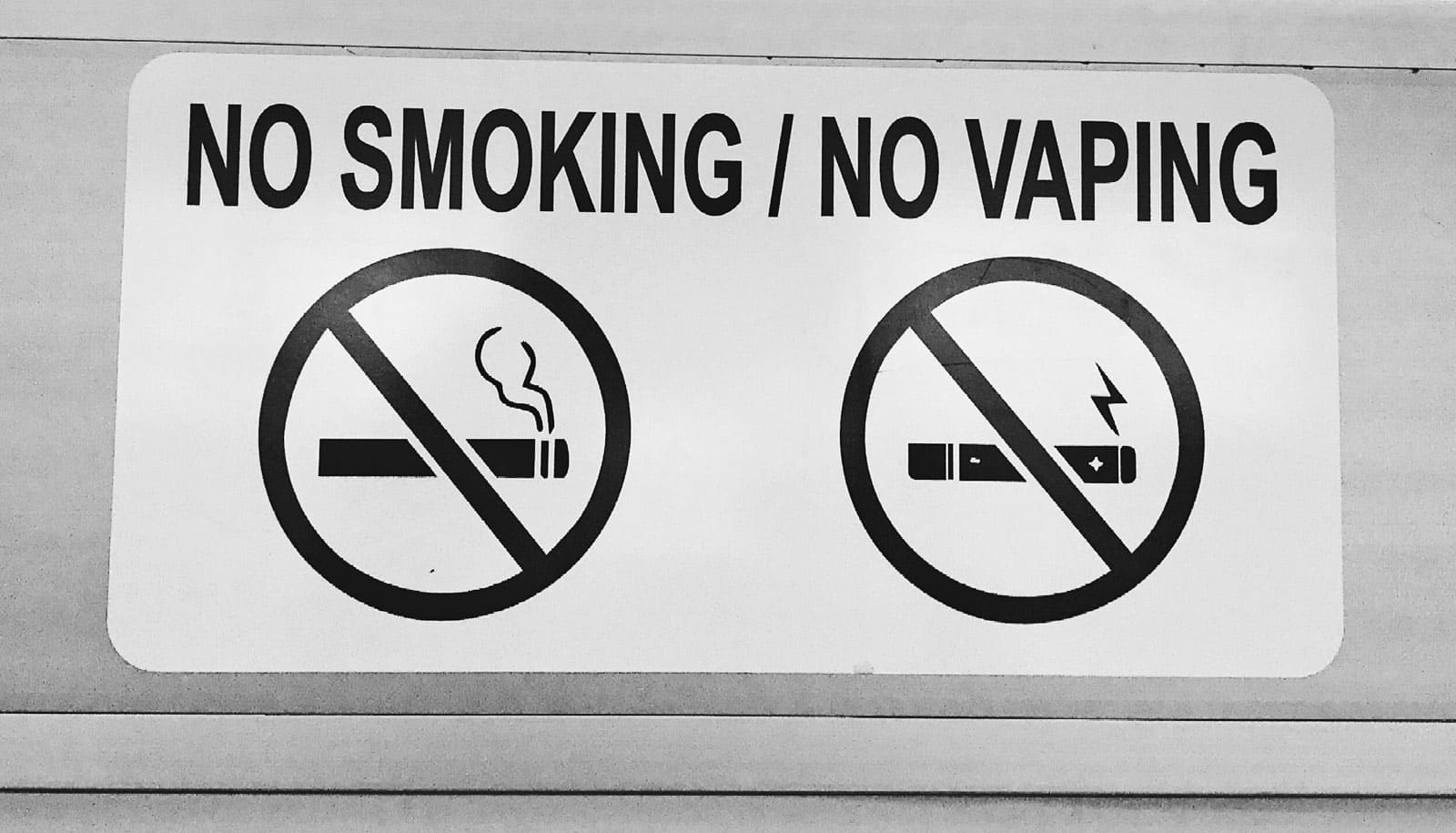E-cigarette company Juul has sparked a “nicotine arms race,” tobacco marketing expert Robert Jackler argues.
When Juul first put its e-cigarettes on the market, it brought a new level of nicotine to the industry. At the time, most brands contained e-liquids that were 1 to 2 percent nicotine by volume. Juul pods contain 5 percent (by weight)—equivalent to 5.9 percent by volume—three times more concentrated than what was on the market before.
The disparity caused other e-cigarette companies to increase the amount of nicotine in their devices and pods, which Jackler, professor and chair of otolaryngology at Stanford University and senior author of a new paper in Tobacco Control, argues led to nicotine one-upmanship in the e-cigarette industry.
In the paper, Jackler and his coauthor discuss drive to add more nicotine to e-cigarettes and provide evidence to suggest that it plays into earlier addiction trends, especially among the youth demographic.
Here, Jackler, who is the founder of a group called the Stanford Research Into the Impact of Tobacco Advertising, discusses how this competition plays into earlier addiction trends, especially among young people, how elevated nicotine levels affect health, and what changes policy makers need to make.
How has Juul changed the norms of e-cigarette production?
The astounding financial success of Juul, which is valued at $38 billion after only 3½ years on the market, has led to an upswell of devices that emulate its high-tech appeal, small size, and stealthiness.
Until recently, most e-cigarette liquids carried 1 to 2 percent nicotine, with a few considered “super high” at 3 percent, intended for the two-pack-a-day smoker.
In 2015, Juul introduced a 5 percent nicotine vaping liquid with a novel chemistry—nicotine salts—which improved palatability, enabling higher concentrations of nicotine without undue bitterness.
Following Juul’s phenomenal success, numerous knockoff devices were introduced that emulated, or even exceeded, Juul’s very high nicotine level.
Also problematic, the nicotine percentage is inconsistently portrayed on labels. Juul, unlike most e-liquid brands, measures its nicotine content by weight rather than by volume. For example, the nicotine level in Juul’s e-liquid is 5 percent by weight versus 5.9 percent by volume. This inconsistency in labeling the nicotine concentration is likely to mislead consumers.
Do we know what the health ramifications of long-term, high-nicotine usage are?
The rapidly rising popularity of high-nicotine e-liquids threatens to addict a generation of youth. The epidemic of their use among American middle and high school students is reversing decades of public health efforts. Nicotine addiction is very hard to escape—meaning that many youths will get addicted for their lifetime.
In terms of acute health risks, Juul and its high-nicotine emulators are more efficient at delivering nicotine than conventional cigarettes. This makes them potently addictive, especially to nicotine-naive teens.
More than 70 e-liquid brands sell high-nicotine products, meaning those with nicotine concentrations of 5 percent or higher by volume, in bulk—30 milliliters or more—which is equivalent to more than 40 cigarette packs.
A single teaspoon of concentrated nicotine is toxic enough to kill five toddlers—the full bottle an entire class of 25 preschoolers.
All of these products come in multiple, youth-appealing sweet and fruity flavors, often in colorful bottles with a picture of cookies, candy, or other dessert treats.
Concentrated nicotine is highly toxic, and these large-volume nicotine bottles are a poisoning risk for children. The lethal dose for a toddler, if ingested, is a bit over 1 milliliter of e-liquid with a 5 percent nicotine content. The typical 30 milliliter bottle, which almost never comes with a child-resistant cap, contains 6 teaspoons of concentrated nicotine liquid.
A single teaspoon is toxic enough to kill five toddlers—the full bottle an entire class of 25 preschoolers.
Juul is often marketed as a device that will help individuals addicted to cigarettes quit. Is it actually effective? Are there downsides if it works?
The body of data regarding the possible role of e-cigarettes in traditional cigarette cessation is accumulating. While results across studies have been variable, a recent prospective study published in the New England Journal of Medicine reported 18 percent success in quitting combustible cigarettes with e-cigarettes, as opposed to 9.9 percent with other forms of nicotine replacement therapy such as patches and gums together with ongoing medical and behavioral support.
Others have warned that smokers who use e-cigarettes to satisfy their nicotine urges in places where smoking is banned have deepened their nicotine addiction. For at least some dual users (both cigarettes and e-cigarettes), adding e-cigarettes makes quitting less likely.
What is a promising “off ramp” for adult smokers has proven to be a heavily travelled “on ramp” for nonsmoking teenagers.
Whether or not high-percent nicotine devices are more effective in transitioning cigarette smokers has yet to be established by independent research, but anecdotal evidence suggests that they may be more effective than lower-nicotine e-cigarettes.
The rapid rise in nicotine blood levels following a puff from Juul more closely emulates that achieved by a regular cigarette than lower nicotine e-cigarette products. This also helps to explain why it so readily leads to addiction among nonsmokers.
What is a promising “off ramp” for adult smokers has proven to be a heavily travelled “on ramp” for nonsmoking teenagers.
Does nicotine affect the health of teens differently than adults?
For a teen, becoming nicotine-addicted greatly increases the likelihood that they will graduate to traditional, combustible cigarettes. Importantly, nicotine addiction during adolescence increases the vulnerability to subsequent addictions, like opioids or cocaine. For most users of illicit drugs, their initial addiction was to nicotine.
Almost all nicotine addiction commences during adolescence. The proliferation of highly concentrated nicotine e-liquid has lowered the price of addiction considerably, and price is an important factor for youth with limited discretionary income. Over the long term, the most effective way to reduce the number of adult smokers is to prevent teens from becoming nicotine addicts in the first place.
How can public health or government officials better regulate the sale of higher concentration nicotine solutions?
High-nicotine vapor products often come in sweet and fruity flavors, such as mango or gummy bear. One policy option would be to ban youth-appealing flavors from all nicotine-containing e-liquids and allow only unsweetened tobacco flavor to accompany nicotine. This would help to reduce the appeal of these products among youths while retaining a product acceptable to adult smokers seeking to transition from cigarettes.
Another regulatory option would be to cap the amount of nicotine permissible in e-cigarettes. The amount of nicotine in Juul pods that is sold in the United States (59 milligrams of nicotine per milliliter of e-liquid) would not be permitted in Europe or the United Kingdom, which have adopted limits of 20 milligrams of nicotine per milliliter of e-liquid.
If the US adopted this standard, it would almost certainly reduce the tendency of e-cigarettes to act as a gateway to youth nicotine addiction. However, it may also reduce their efficacy in cigarette-smoking cessation. As high-nicotine versions may well prove more efficacious in transitioning cigarette smokers to vapor, one option would be to allow sale of high-nicotine e-liquids only by doctor’s prescription.
Source: Stanford University


